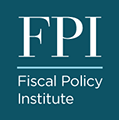New Data Confirm Tax Flight Is A Myth
New York State often faces calls for higher tax revenue, whether due to concerns over revenue shortfalls or a desire to increase public spending. This brief assesses the soundness of raising revenue through the Personal Income Tax, examining the fiscal stability of such revenue, fundamental fairness considerations, and responses to common arguments against raising the state income tax.

